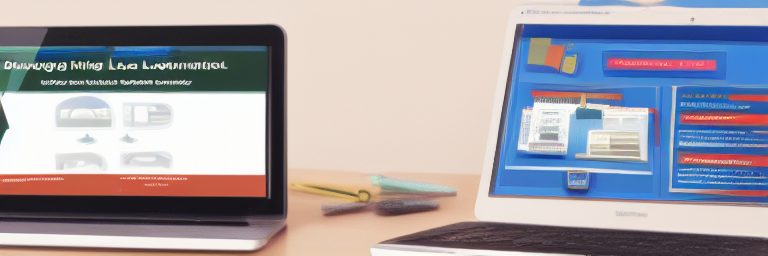What is an LMS system?
A Learning Management System (LMS) is a software application that enables administrators, educators, and learners to manage, track, and deliver web–based educational courses and training programs. LMSs are used to deliver online training, track learner progress, and provide reporting and assessment capabilities. LMSs provide a platform for administrators and instructors to create, deliver, and manage content, assessments, and communication with learners.
How LMS Systems Work
An LMS (Learning Management System) is a web–based software system that allows teachers, administrators, and students to collaborate, communicate, and manage course materials online. The main purpose of an LMS is to facilitate the delivery of educational content and support classroom activities.
When using an one, teachers can create course content and assign tasks to students. Students can then access the course materials and complete the tasks using the it. Teachers can monitor student progress, provide feedback, grade assignments, and track student performance.
The LMS also provides a platform for teachers to communicate with their students. Teachers can post announcements, send messages, and provide feedback directly to their students.
Also, they provide tools for collaboration. Students can work together to complete group assignments, discuss topics, and share ideas. As well, they can track student performance and provide real–time analytics. Too, this allows teachers to monitor student progress and identify areas of improvement.
Overall, an LMS is an invaluable tool for teachers and students. It provides a platform for collaboration and communication, helps teachers manage course materials, and allows teachers to track student performance.
Advantages and Challenges
Learning Management Systems (LMSs) are used to deliver and manage eLearning courses and other related activities. They provide a centralised platform for educators to store, distribute, and track student progress.
Advantages:
- Flexibility: LMS systems allow students to access material from any device with an internet connection, enabling them to learn anytime, anywhere.
- Cost–Effective: LMS systems are cost–effective solutions that can be used to reduce the cost of delivering education and training.
- Automation: LMS systems automate many of the administrative tasks associated with eLearning, such as grading and tracking student progress.
- Accessibility: LMS systems provide access to a range of digital resources, such as videos, online textbooks, and simulations, that can be used to supplement traditional teaching methods.
- Scalability: LMS systems allow educators to easily scale up the delivery of eLearning courses to accommodate larger numbers of students.
Challenges:
- Technical Issues: Problems can arise if the LMS system is not compatible with the hardware and software used by the students.
- Lack of Student Engagement: LMS systems can be impersonal, which can lead to low levels of student engagement.
- Difficulty in Setting Up: Setting up and maintaining an LMS system can be challenging for educators who lack technical knowledge.
- Security: LMS systems need to be secure to protect the integrity of the data stored within them.
- Accessibility: LMS systems need to be accessible to all students, regardless of their abilities.
Examples of LMS Systems
Examples of LMS systems include Blackboard, Canvas, Schoology, and Moodle.
- Blackboard is an established LMS used around the world for online learning. It provides tools for course creation, online discussion forums, and assessments. It also offers a variety of tools for instructors to track student progress and engagement.
- Canvas is a cloud–based and allows users to create custom courses. It includes features such as built–in quizzes and gradebooks, interactive discussions, and student feedback. It also offers an intuitive user interface and mobile app.
- Schoology is one that focuses on collaboration and communication. It includes features such as virtual classrooms, quizzes and surveys, and activity feeds. It also offers integration with other applications such as Google Drive and Dropbox.
- Moodle is open source with a range of features. It includes tools for course creation, quiz and assessment tools, and the ability to track student progress and engagement. It also offers an easy–to–use interface and the ability to customize the look and feel of the system.
The Future Looks Bright
The future of LMS systems looks very bright. With the continuing advances in technology, the capabilities are only going to increase over time. Too, as more organizations move to remote working and online learning, these systems will become even more important tools for managing and delivering educational content.
Also, in the future, they will become even more customizable and user–friendly, allowing users to tailor the system to their individual needs. Additionally, there will be more integration with other technologies, such as artificial intelligence and machine learning, to further enhance the user‘s experience.
As well, the use of virtual reality and augmented reality will also become more commonplace in LMS systems, providing a more interactive and immersive learning experience. Then, this will make it easier for learners to understand and retain information more effectively.
Finally, the use of analytics and data–driven insights will become even more important. By collecting and analyzing data, LMS systems will be able to provide more personalized learning experiences for each student. Overall, the future looks very exciting. Furthermore, with the advances in technology, the capabilities of these systems are only going to become more powerful and useful in the years to come.

